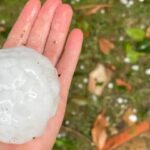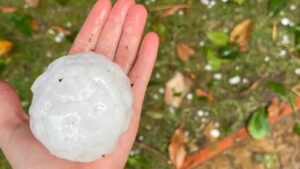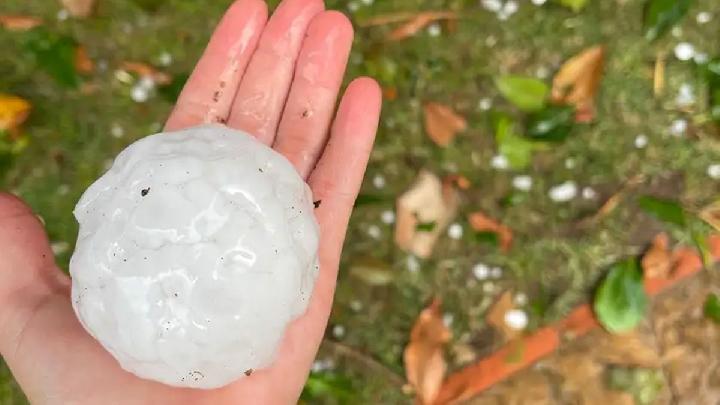The seahorse is one of the most intriguing and unique creatures of the ocean, known for its distinctive horse-like head, prehensile tail, and unusual reproductive behaviors. Despite its small size, the seahorse has captivated marine enthusiasts, scientists, and nature lovers due to its fascinating biology, charming appearance, and symbolic role in various cultures. Often referred to as the “sea horse” due to its resemblance to the mythical creature, the seahorse holds a special place in the marine ecosystem and in popular culture.
In this article, we will explore the world of the seahorse, its physical characteristics, behavior, reproductive habits, and its cultural significance, as well as the challenges it faces in the wild and efforts to conserve this enchanting marine species.
1. What is a Seahorse?
A seahorse is a small marine fish belonging to the genus Hippocampus, which is part of the family Syngnathidae. The name “hippocampus” comes from the Greek words “hippos” (horse) and “kampos” (sea monster), reflecting its horse-like head and body shape. Seahorses are found in shallow coastal waters, seagrass beds, coral reefs, and mangrove forests around the world, particularly in the Indo-Pacific region, the Mediterranean, and the Atlantic Ocean.
- Physical Characteristics: Seahorses are small, ranging from 1 to 14 inches (2.5 to 35 cm) in length, depending on the species. They have a curved, upright body that is protected by bony plates rather than scales. Their head is elongated and resembles a horse’s head, with a long, tubular snout used to suck in food. The body of a seahorse is covered with small, hard plates that provide protection but also limit flexibility, making them less agile swimmers. They have a prehensile tail, which allows them to grasp and anchor themselves to plants or other underwater structures.
- Coloration: Seahorses can vary in color depending on their species and environment. They can range from bright yellow, orange, red, and green to shades of brown, gray, and even translucent. Some seahorses can change color to blend into their surroundings, a form of camouflage that helps protect them from predators.
2. Habitat and Distribution
Seahorses are typically found in shallow coastal waters where they can find shelter and food. They prefer areas with seagrass beds, coral reefs, and mangrove forests, which provide both food and protection. Seahorses are not strong swimmers and rely on their prehensile tail to hold onto vegetation or coral, often remaining stationary for long periods.
- Global Distribution: Seahorses are found in oceans worldwide, from tropical to temperate waters. They are most abundant in the Indo-Pacific region, including areas around Southeast Asia, Australia, and the Philippines. They can also be found in the Mediterranean, the eastern coast of the United States, and parts of South America and Africa.
- Environmental Preferences: Seahorses thrive in habitats with slow-moving water, as they are weak swimmers. They are often found in shallow areas, where the water is calm and full of vegetation. Seagrass meadows, coral reefs, and mangrove forests are ideal environments, as they provide hiding spots, food sources, and anchor points for the seahorse’s prehensile tail.
3. Diet and Feeding Habits
Seahorses are carnivorous, feeding primarily on small invertebrates such as shrimp, plankton, and tiny fish. Their feeding mechanism is unique because they lack teeth and a stomach. Instead, they suck in food through their long snouts, using a process called “suction feeding.”
- Feeding Process: When a seahorse detects potential prey, it quickly extends its snout toward the food, creating a vacuum that sucks it into its mouth. Due to the lack of a stomach, seahorses digest their food very quickly, often consuming up to 3,000 brine shrimp or small zooplankton a day. They spend much of their time feeding, as their high metabolic rate requires constant nourishment.
- Hunting Strategy: Seahorses do not actively chase their prey. Instead, they rely on their camouflage to remain hidden among the plants and coral, patiently waiting for food to come within range. Their prehensile tails help them stay anchored to a spot, ensuring they don’t drift away with currents. This feeding strategy makes seahorses highly specialized hunters, but it also makes them vulnerable to environmental changes that disrupt their food sources.
4. Reproductive Behavior: The Loyal Partners
One of the most fascinating aspects of seahorses is their unique reproductive system. Unlike most animals, it is the male seahorse that carries the fertilized eggs and gives birth to the offspring, a rare trait in the animal kingdom.
- Mating Rituals: Seahorses are known for their elaborate courtship rituals. During mating, male and female seahorses engage in a “dance,” which can last for hours. They intertwine their tails, change colors, and display synchronized movements. This behavior helps to strengthen their bond and ensure that both partners are ready for reproduction.
- Pregnancy in Males: The female seahorse transfers her eggs into a special brood pouch located on the male’s abdomen. Here, the male fertilizes the eggs and carries them for about 10 to 25 days, depending on the species and environmental conditions. The male’s brood pouch acts like a placenta, providing oxygen and nutrients to the developing embryos.
- Giving Birth: When the eggs are fully developed, the male goes into labor and gives birth to fully-formed, miniature seahorses. The birth process can be intense, with the male expelling dozens or even hundreds of tiny seahorses at once. These newborn seahorses are fully independent and begin swimming away immediately, although they are still vulnerable to predators and must find shelter in the surrounding environment.
- Parental Care: After giving birth, male seahorses may rest and recover before mating again. In some species, males and females may mate multiple times in a season. While the male carries the young during pregnancy, both parents are involved in the courtship and mating process. After birth, the tiny seahorses are left to fend for themselves in the wild.
5. Conservation Status and Threats
Seahorses are facing numerous threats in the wild, and many species are at risk of extinction. The International Union for Conservation of Nature (IUCN) lists several seahorse species as vulnerable or endangered due to overfishing, habitat destruction, and the illegal wildlife trade.
- Overfishing and the Aquarium Trade: Seahorses are often caught for use in traditional medicine, the aquarium trade, and as souvenirs. In some countries, they are dried and sold as “medicine” or used in folk remedies, despite a lack of scientific evidence supporting their efficacy. The high demand for seahorses, combined with their slow reproduction rates, has led to declines in their populations in certain regions.
- Habitat Loss: Coastal development, pollution, and the destruction of critical habitats like seagrass beds and coral reefs are significant threats to seahorse populations. These habitats provide both food and shelter for seahorses, and their loss can disrupt local ecosystems and make it harder for seahorses to find suitable environments to live and reproduce.
- Climate Change: Rising ocean temperatures and increased acidification of the oceans due to climate change also pose a threat to seahorses. Warmer waters can lead to the destruction of coral reefs and seagrass beds, further reducing the availability of suitable habitats for seahorses.
6. Conservation Efforts
To protect seahorses, several organizations are working to raise awareness, regulate trade, and conserve their natural habitats. The Convention on International Trade in Endangered Species (CITES) has included seahorses in its list of protected species, regulating their trade to prevent over-exploitation. Additionally, some countries have established marine protected areas (MPAs) to safeguard the seahorses’ habitats and promote sustainable fishing practices.
- Captive Breeding Programs: Some aquariums and conservation organizations have started captive breeding programs to help ensure the survival of endangered seahorse species. These programs aim to release healthy, captive-bred seahorses into the wild to bolster natural populations.
- Habitat Restoration: Efforts to restore critical habitats, such as seagrass meadows and coral reefs, are underway in many coastal areas. These programs not only benefit seahorses but also support a wide range of marine life that depends on these ecosystems.
7. Conclusion: The Loyal Guardians of the Sea
The seahorse is a remarkable creature that embodies both beauty and mystery. Its unique appearance, fascinating reproductive behavior, and role as a loyal partner in the marine world make it one of the most beloved animals in the ocean. However, the seahorse is also a species in need of protection, facing numerous threats from human activities and environmental change.
Through continued conservation efforts, sustainable trade practices, and habitat restoration, we can help ensure that these extraordinary marine creatures continue to thrive in the wild. The seahorse remains a symbol of both the fragility and resilience of marine life, reminding us of the importance of protecting the oceans and all the creatures that call it home.













